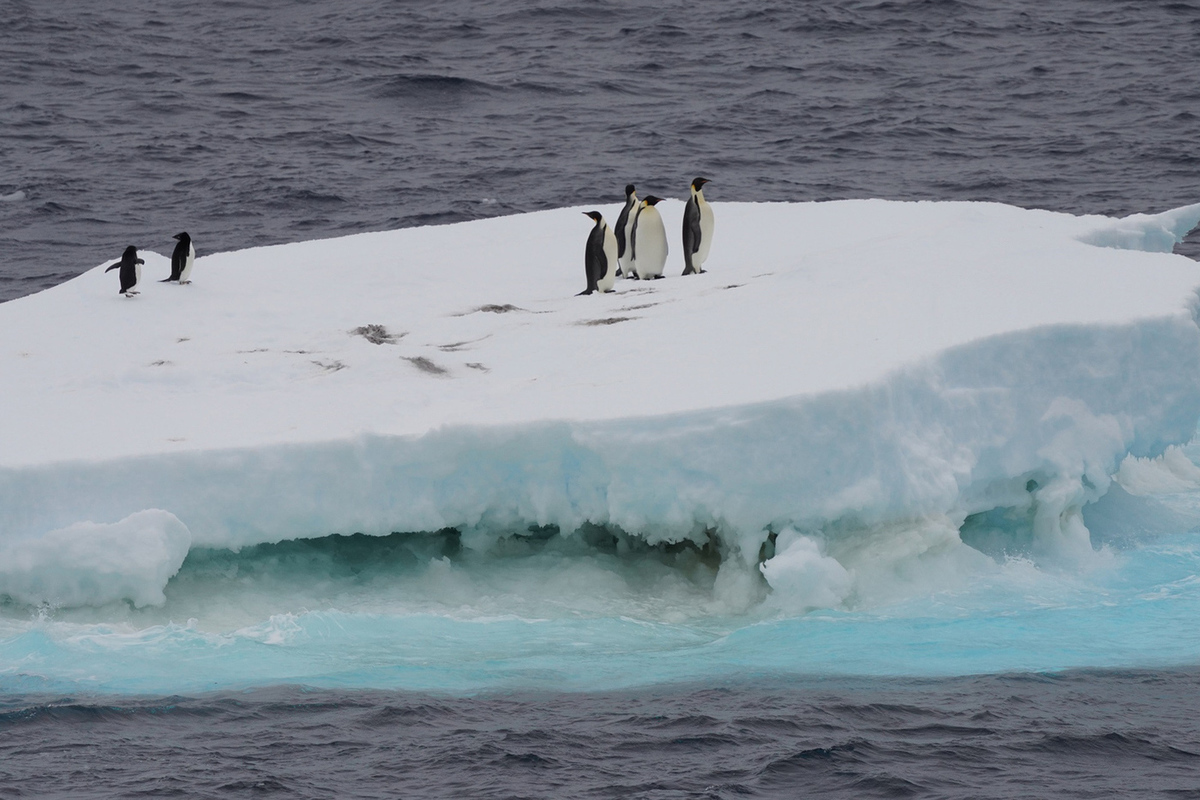The accelerating melting of ice in Antarctica alarms scientists: “A sharp critical transition”
[ad_1]

For the third year in a row, sea ice around Antarctica has fallen below 2 million square meters. km – a threshold that has not been exceeded until 2022 since satellite measurements began in 1979, writes The Observer.
The latest data from the US National Snow and Ice Data Center confirms that the past three years have been the three lowest on record for the amount of sea ice floating around the continent.
Another exceptionally low year was further evidence of a “regime change”, scientists said, with new research suggesting the continent’s sea ice has undergone a “dramatic critical transition”.
Antarctica’s sea ice reaches its thinnest extent during the continent’s peak summer in February each year.
As The Observer notes, on February 18, the five-day average sea ice extent dropped to 1.99 million square meters. km, and on February 21 it amounted to 1.98 million sq. km. The record low figure was 1.78 million square meters. km, set in February 2023.
Whether the current level is the minimum for this year will not be known for another week or two.
“But we are confident that the last three years will be the lowest on record,” said Will Hobbs, a sea ice specialist at the University of Tasmania.
Antarctica’s sea ice reaches its peak every September, but last year’s maximum extent was the lowest on record, easily beating the previous record by about 1 million square meters. km. Scientists were shocked by how much less ice formed last year, significantly more than anything previously seen.
Coverage appeared to recover slightly in December as the freeze continued, but then fell back to current levels.
There are no reliable measurements of the thickness of Antarctic sea ice, but Ariane Puric, a climate scientist specializing in Antarctica and the Southern Ocean at Monash University, said it was possible that the ice that did grow was thinner than usual.
“It seems plausible, and thinner sea ice may melt faster,” she said.
Scientists are still investigating what is causing the decline in sea ice, but they are concerned that global warming may play a role – in particular by warming the Southern Ocean, which surrounds the continent.
Sea ice reflects solar radiation, meaning less ice could lead to more ocean warming.
Walt Meyer, a senior scientist at the National Snow and Ice Data Center, said that because most of the ice melts completely each summer, “most of the ice is only 1 to 2 meters thick,” and even less near the ice edge.
“At the very low maximum last September, the ice was likely thinner on average in many areas, but it is difficult to say how much of an impact this had on the melt rate and the approaching minimum,” he said.
Antarctica’s ecosystems are linked to sea ice, from the formation of phytoplankton, which can remove carbon from the atmosphere, to penguin breeding grounds.
Last year, Arian Puric led a study that said the continent’s sea ice may have undergone a “regime shift” that was likely caused by a warming subsurface ocean about 100 meters below.
Research conducted by Hobbs and his colleagues at the Australian Antarctic Program Partnership and other institutions has added evidence to support this claim.
A paper published this month in the Journal of Climate Scientists looked at changes in the extent of sea ice and where it forms each year.
Looking at two periods – 1979 to 2006 and 2007 to 2022 – the researchers found that the amount of sea ice became much more variable or erratic in the later period.
This change could not be explained by changes in the atmosphere – mainly winds – that previously determined much of the interannual variability in ice.
The study concludes that Antarctica experienced an “abrupt critical transition,” but Hobbs said they could not say why.
“We don’t know what is driving change. It could be a warming ocean or a change in ocean salinity,” he said. But it’s also possible that the change was a natural shift.
Scientists warn that the loss of sea ice is just one of several major changes observed in Antarctica that are likely to have global consequences – in particular, its loss opens up much of the continent to the ocean, accelerating the loss of ice on land, which could lead to increased world ocean level.
Scientists are increasingly calling for governments to take changes in Antarctica more seriously and lamenting the comparative lack of data on and around the continent.
Hobbs said: “What we need is continuous measurements of ocean temperature and salinity underneath the sea ice. We need improvements in our climate models. And we need time.”
[ad_2]
Source link








